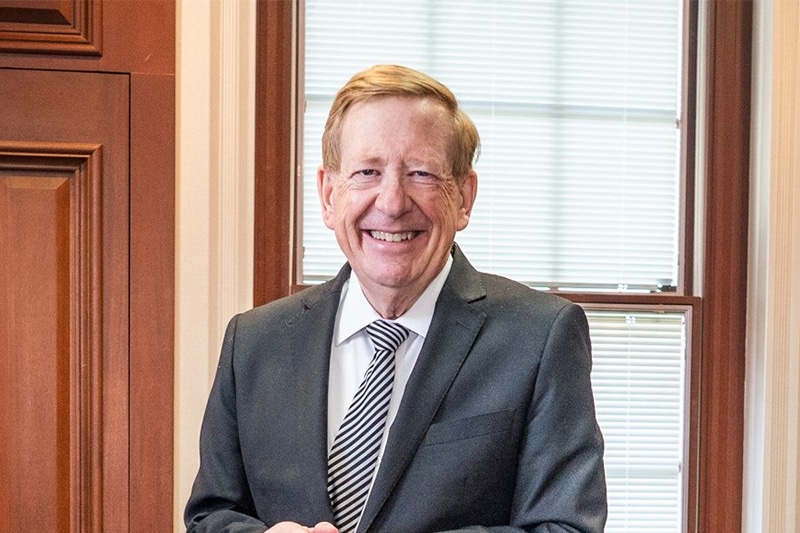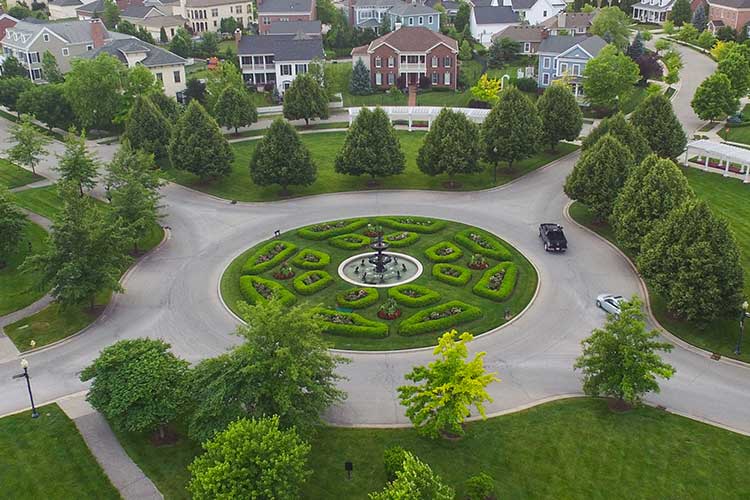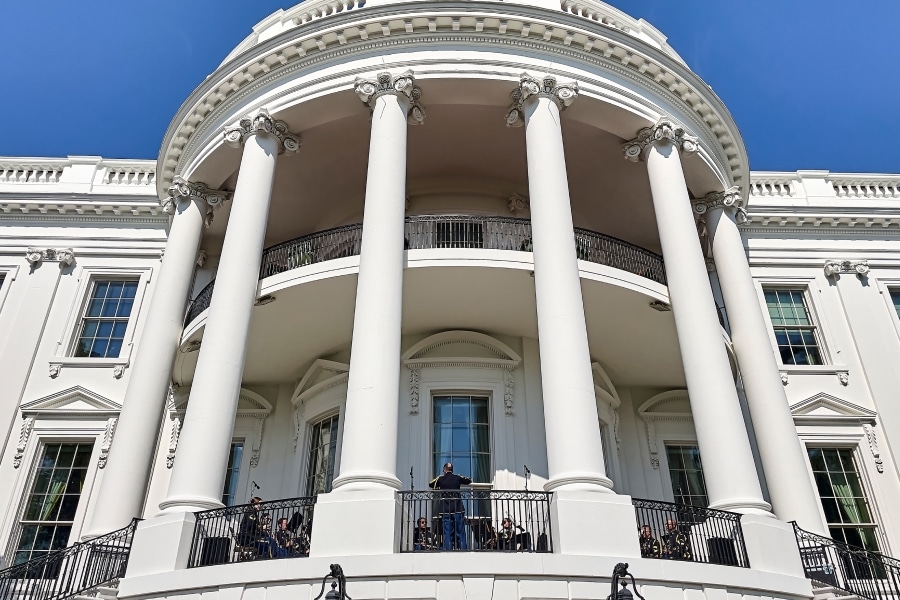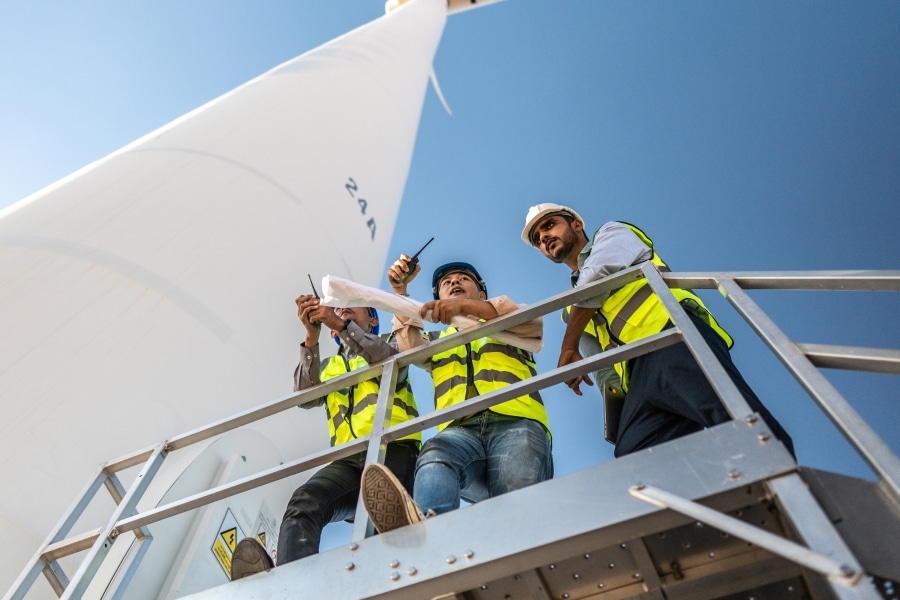The red-green traffic signal, first installed in Cleveland in 1914, has been the standard tool, virtually everywhere, for controlling traffic accidents at intersections ever since. Everywhere, that is, except Carmel, Indiana—the world’s undisputed leader in building and promoting the modern roundabout.
Jim Brainard, the city’s mayor since 1996, has made roundabouts Carmel’s most characteristic feature. Within the 48-square-mile city of 100,000, located just northwest of the state’s capital of Indianapolis, Brainard has built 132 roundabouts. He’s also become America’s—and perhaps the world’s—most adamant cheerleader for roundabout adoption.
He argues they save lives—and money.
“Roundabouts have reduced traffic fatalities by 90% in Carmel,” said Brainard, a lawyer by training. “The U.S. average fatality rate per 100,000 people is 14. It tends to be higher in suburban areas because the roads are built wider for faster speeds. Indianapolis has done a little bit better than normal—11.7 per 100,000. The average in Carmel is two.”
Is there a direct causal link between adoption of roundabouts and lower traffic accident rates?
That may not be proven, but to Brainard, who first became intrigued with roundabouts as a graduate student at Oxford University in England, the connection is logical. “It’s all about speed,” he said.
Roundabouts force people to slow down. “A stoplight encourages drivers to speed up to beat the yellow light,” Brainard said. “In a roundabout, everyone has to slow down to 15 to 25 miles an hour. The human error rate is never going to change very much. So, the question is, when you make an error, what type of accident is it going to be—high-speed or low-speed?”
It turns out that roundabouts in Carmel reduce overall accident rates, not just fatalities. “We’ve also reduced accidents with injuries requiring visits to the hospital by 75-80%, compared to national averages,” Brainard said.
Roundabouts vs. rotaries
Conventional wisdom is that Americans don’t like roundabouts; in many states, engineers have been demolishing and replacing traffic circles. Brainard has heard this continually; raise the issue and he’ll stop you mid-sentence.

“Yes, in New England in the Middle Atlantic states, they’ve been taking out rotaries, because a lot of accidents happen in rotaries,” he said. “But there’s a difference between roundabouts and rotaries. Rotaries are larger and they tend to have multiple lanes, so people go faster inside the circle. And generally, you’re not angled in—you go straight in and turn right—and you make a right turn out of the circle. In a roundabout, you enter and exit at an angle. In an accident, that’s the difference between a T-bone and a sideswipe.”
Modern roundabouts were designed by British engineers around 1962. They’re small and they have angled ingresses and egresses.
The smaller the circles are, the safer they become. “We have higher crash rates in our double lane roundabouts then our single lane roundabouts,” Brainard said. “But they’re still a vast improvement over stoplights. We can move 50% more cars per hour through roundabouts than we could through stoplights. If you have constant flow, you don’t have to add more lanes.”
Another benefit is pedestrian safety. “With cars moving at 10-15 mph, a pedestrian who gets hit has a much better chance of surviving than if someone blows through a light or a stop sign at 50,” Brainard said. Some of Carmel’s bigger roundabouts feature raised crosswalks that act like speed bumps.
Cost advantage
In terms of their construction, Brainard said roundabouts are, by and large, less expensive to build compared to stoplights. They become far more costly, however, when a stoplight intersection is ripped up in favor of installing a roundabout, he said.
A stoplight, for instance, costs about $300,000 in the Midwest. “They‘re big metal objects, 800-900 pounds, that have to be strong and wind-resistant,” Brainard said. “The electricity cost has gone way down since we went to LED, but it’s still $500-600 a year per light.”
Carmel’s first roundabouts were built as features of an entirely new road on the edge of town. “We did a major public education program, using some video we borrowed from Colorado,” Brainard said. “They built some roundabouts at Beaver Creek and Vail off Interstate 70. We played those on our public access television station. We went to homeowners association meetings to spread the word about how one is supposed to drive through a roundabout. We got some pushback, but not a lot.”
In recent years, urban planners have emphasized retrofitting of cities to create more walkable downtowns. But Brainard suggested it’s equally important to retrofit the drivable infrastructure in cities and suburbs. “The average American spends two hours a day in their car,” he said. “A lot of physical and mental health issues go with that.”
Roundabouts also are more environmentally responsible than stoplights, Brainard said, because they reduce energy consumption and the need to widen roads. That’s true for each roundabout, but even more so in Carmel’s unique grid of more than 130 roundabouts built over a 24-year period.
“Our city engineer estimated that we save the equivalent of about 272 18-wheel tankers’ worth of fuel per year,” Brainard said. “The reason is that the cars don’t have to sit there idling. It takes a lot more energy to go from 0-15 mph than it does from 15-30. In a roundabout, only 5-8% of the cars have to stop for most of the day.”
In the event of a power failure, the city must send police out to direct traffic at intersections with non-working stoplights, Brainard noted, and engineers have to reset the timing. “But if we have a heavy storm, the roundabouts keep working,” he added.

Many of Carmel’s roundabouts have raised landscaping or sculptures on the inside, which makes it difficult to see across the intersection. Counterintuitively, though, not being able to see across the roundabout actually improves traffic flow. “At a normal intersection, when people see someone coming a quarter mile away, they’ll sit there and wait for them to pass,” Brainard said. “In a roundabout, you look to the left and as soon as you find a gap, you merge into traffic.”
A standard fixture
Roundabouts are now standard for new developments in Carmel. But there are some areas, Brainard said, where building a roundabout isn’t practical. Roundabouts may also be too confusing to drivers, which might be preventing more mainstream adoption across the country. In heavily urbanized areas, for example, there may simply not be room for roundabouts. For many, stoplights simply eliminate the guesswork that come with roundabouts. Brainard advises against mixing stoplights and roundabouts along a single road.
Carmel was scheduled to host the biennial meeting of the International Making Cities Livable Council in June, but the meeting was delayed by a year because of the COVID-19 pandemic. The organization’s founder, British architect Suzanne Lennard, had invited Brainard to speak in Portland, Oregon, in 2012. He’s been on the Council’s advisory board since, alongside architects, planners and engineers from around the world.
As mayor of the world’s roundabout capital, Brainard has become the go-to advocate for these features. “Bend, Oregon, has about 30 roundabouts,” Brainard said. “Colorado Springs has a bunch. Dade County in Florida has 30 or 40. But no place else in the U.S. has a grid like ours.”











